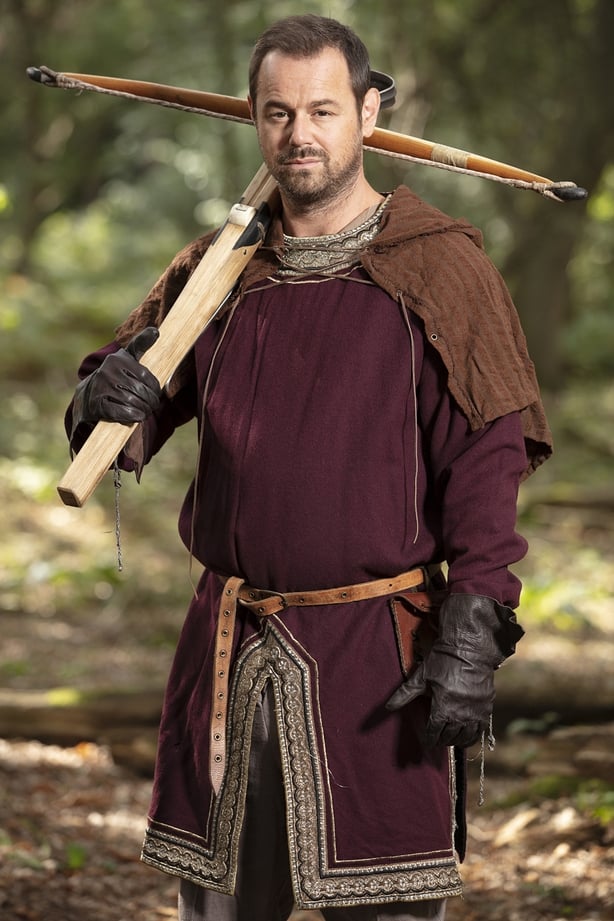

The producers exploited this gameness to take a more subdued Danny on an emotional roller coaster of discoveries revealed to him by another stellar cavalcade of professional historians whose expertise was conveyed with humour and pathos. I’m sure there’s loads more to discover’. As it was, he embraced it wholeheartedly – ‘The first ’arf of this journey really ’as spun me nut. I wonder if you’d told Danny of this change in trajectory before he set out, he would have been any less keen. My bad! Episode 2 introduces elements of gender and queer history framed around a more nuanced approach to masculinity. Had I wished to have been disabused of this notion, however, I should have checked out the programme previews. This is one man’s journey that essentially explored great men in his lineage (we hardly knew ye in episode one, Empress Matilda), although the story was not solely of a political and military bent. Perhaps inevitably given the subject matter of the programme and Danny’s mission to trace his family history, diversity and diverse histories have been wanting. In that time, I have tried to reflect on the first episode, about which I posted on Tuesday, and assess what might have been done differently. I have known for some days that I would be reviewing the second episode of Danny Dyer’s Right Royal Family. Read the recap of episode one.īy Paul Dryburgh, Principal Records Specialist, The National Archives These can help you spot things that run in the family.This is the second of two recap reviews of Danny Dyer’s Right Royal Family. For example, in addition to names and key dates, include places of birth, marriage and death, and occupations too. It can be interesting to include as many brief details as you can fit.Many people put surnames in UPPER CASE to help them stand out.It is traditional to place the male of each couple to the left, and the female to the right.If an ancestor marries more than once put a small number 1 or 2 next to each spouse.To save space, use abbreviations such as: b for born, bp or bap for baptised, m or = for married, b or bur for buried.As mentioned, be sure to write the names of people in the same generation as each other on the same ‘latitude’ as each other.To help make your chart intelligible to others here are a few conventions. Who not incorporate some family traditions?Ī family tree chart inevitably needs to include quite a bit of information in a tight space. Then, once you’ve checked it’s all correct, go over in pen. I would recommend always drawing up your family tree in pencil first (it’s amazingly easy to write a name or date in the wrong place).As you add further people and realise that you need more space, you can simply shuffle your stickies along, until you have the perfect layout. Write each person’s name on a sticky note, and place it on your large sheet of paper. If you’re going to create a descendant chart (really fun for family gatherings) or if you’re going to include all relatives (descendants or ancestors), then you are going to have to allow for a more complicated layout (as the numbers of siblings, spouses etc, per person will vary).Just remember to keep each generation on the same ‘latitude’ so that you can keep track of who’s who. If you are just including direct ancestors, you can draw up an orderly chart with space for 2 parents, 4 grandparents, 8 great-grandparents and so forth.Get a large sheet of paper, a pencil, sticky notes, and finally a pen.
DANNY DYER FAMILY TREE PLUS
This old-school way of doing things still has enormous appeal and many very definite plus points (you don’t need any high-tech equipment, and can make it as large or small, complicated or simple, as you choose). Perhaps, you’d like to create your own family tree chart.
DANNY DYER FAMILY TREE SOFTWARE
Whether you’re using desktop family history software or creating your tree in the cloud, a digital family tree has many advantages: easy to update, flexible format (allowing you to add all relations, siblings etc, not just direct line ancestors), allowing you to add photos and sources too.



Maybe, however, you like to keep it hi-tech and online, making use of the family tree building tools on subscription sites such as: Ancestry, Findmypast, MyHeritage and TheGenealogist, and Family Search.Īs well as family history software companies: RootsMagic, LegacyFamilyTree, TreeView, Family Historian, and FamilyTreeMaker. To celebrate a milestone anniversary in the family, you could splash out on a bespoke calligraphy family tree chart, such as those created by Janet Smith (creator of the Danny Dyer family tree on Who Do You Think You Are? a few years ago) Digital tree Some will work from paper notes, others will accept a GEDCOM file. There are several bespoke chart printing services on offer such as MyHistory and Genealogy Printers. You may have your family history research stored in a family history programme or online tree and wish to print a large copy for display.


 0 kommentar(er)
0 kommentar(er)
